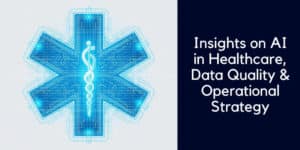What’s inside:
This article explores how AI for medical billing works and explains how to move from reactive billing to a proactive, data-driven revenue strategy, specifically:
- How hospitals are reducing claim denials and recovering lost revenue
- Practical examples of AI-driven charge capture, coding, and forecasting
- Why adopting intelligent billing systems builds long-term financial resilience
The revenue cycle is the financial backbone of any healthcare organization. From patient registration to final payment collection, every step has a direct impact on cash flow. At the center of it all is medical billing, a process that can either accelerate revenue or become a major bottleneck.
In recent years, AI for medical billing has emerged as a powerful way to streamline workflows, catch costly errors, and provide real-time visibility into billing performance. Hospitals and clinics that adopt these tools are moving from slow, manual processes to faster, more intelligent automated revenue cycle management.
Why Medical Billing Matters
Billing is the crucial link between care delivered and payment received. When done right, it keeps finances stable and predictable. When it goes wrong, organizations face delays, denied claims, and unnecessary revenue loss.
Traditionally, billing has relied heavily on manual coding, static software, and repetitive administrative work; however, it’s a system prone to error and costly inefficiencies. The American Medical Association (AMA) estimates that up to 12% of claims are coded inaccurately, creating preventable denials and wasted resources.
How is AI Transforming Medical Billing?
Instead of reacting to denials and payment delays after the fact, with AI for medical billing, hospitals can take a proactive approach. A few of the biggest impacts include:
Accelerated Claim Processing
Natural language processing (NLP) and computer-assisted coding (CAC) can analyze clinical documentation to suggest billing codes with greater speed and accuracy, reducing manual effort and errors. A study by the American Health Information Management Association (AHIMA) found that CAC improves coder productivity by offsetting approximately 20% of manual effort.
Fewer Denials
AI-enabled revenue cycle tools help hospitals catch potential claim issues early, improving efficiency and reducing administrative costs. Hospitals and physician groups using these interventions have reported up to 15–20% lower administrative spending, including better management of denials.
Automating Repetitive Tasks
Routine tasks such as charge capture, claim status tracking, and elements of prior authorization are now part of a broader trend toward medical billing automation with AI. In a UiPath/Omega Healthcare case study, automation processed over 100 million transactions annually, saving 15,000 staff hours per month and achieving 99.5% accuracy.
Revenue Recovery
AI-powered analytics can flag missed billing opportunities and underutilized codes. On average, hospitals using charge capture analytics recover 1–3% of net patient revenue that would otherwise be lost.
Smarter Forecasting
With real-time visibility into cash flow and payer performance, AI-driven financial planning, and early detection of compliance risks, is rapidly evolving across healthcare operations. Companies like IDENTI are exploring similar AI-driven insights to help hospitals capture the revenue and compliance opportunities that might otherwise be missed.
Together, these shifts transform billing from a reactive back-office function into a strategic revenue driver, demonstrating the impact of AI in revenue cycle management across the organization.
Shifting from Reactive to Proactive Revenue Management
The old model of “fixing problems after the denial” is giving way to prevention-first strategies. AI-driven validation checks catch issues before claims are sent. Over time, these systems adapt to payer-specific rules, helping organizations avoid denials altogether.
This isn’t just about speed; it’s about building financial resilience in an industry where margins are often razor-thin.
Looking Ahead
The role of AI for medical billing will only grow in the years ahead. From aligning reimbursement with quality outcomes to providing patients with clearer, more personalized billing experiences, technology is laying the groundwork for a more transparent, efficient, and financially stable healthcare system, paving the way for solutions that optimize hospital operations and reduce revenue leakage.
And while billing is only one piece of the puzzle, the bigger picture shows that when healthcare leaders embrace automation, they open the door to stronger margins, smarter decision-making, and more time to focus on patient care.
Learn more about AI-driven revenue cycle optimization with IDENTI’s solutions.






